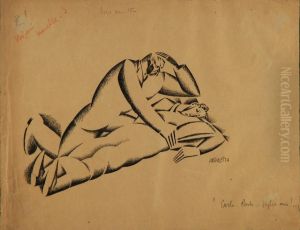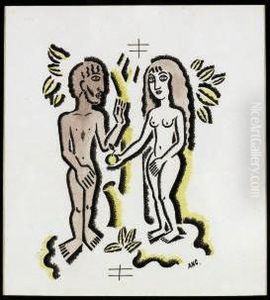Bruno Angoletta Paintings
Bruno Angoletta was an Italian illustrator, painter, and caricaturist, known for his contributions to various magazines and his satirical drawings. Born on December 19, 1899, in Milan, Italy, Angoletta became one of the prominent artistic figures of the early to mid-20th century in Italy.
In the early part of his career, Angoletta's work was heavily influenced by the political and social climate of Italy. He gained recognition for his sharp wit and his ability to capture the essence of his subjects with a few deft strokes. His illustrations often reflected the issues of the day, providing commentary on the social and political landscape of the time.
Angoletta's style was distinctive, characterized by a combination of caricature and realism. This unique approach made his work stand out in the publications for which he contributed, including the satirical magazine 'Bertoldo,' which was popular during the late 1930s and 1940s. He also worked for 'Marc'Aurelio,' another significant Italian satirical magazine of the period, where his illustrations and political cartoons reached a wide audience.
Throughout his career, Bruno Angoletta also dedicated himself to painting and participated in several exhibitions. His paintings often depicted landscapes, scenes of everyday life, and occasionally, historical events. These works displayed a more traditional style compared to his caricatures, showing his versatility as an artist.
Angoletta's work has been praised for its ability to capture the Italian spirit and its social nuances. Even though he lived through two World Wars and the rise and fall of Fascism in Italy, his work maintained a sense of humor and a critical eye that resonated with many.
Bruno Angoletta passed away in 1954. Despite his death, his legacy continues through his prolific output of illustrations, paintings, and caricatures that provide insight into the cultural and political life of Italy during his lifetime. His work remains a valuable resource for understanding the power of visual satire and the role of the artist as a social commentator.

